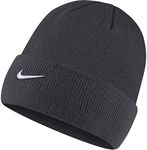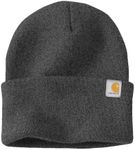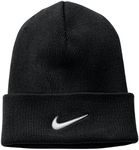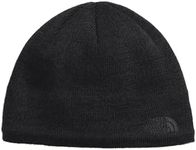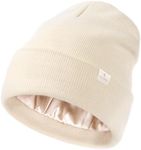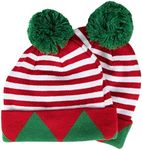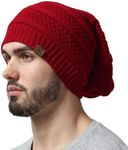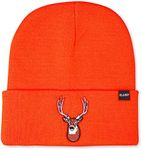Buying Guide for the Best Beanies For Men
Choosing the right beanie can make a big difference in both style and comfort. Beanies are versatile accessories that can keep you warm, complement your outfit, and even make a fashion statement. When selecting a beanie, consider factors such as material, fit, style, and additional features. Understanding these key specifications will help you find the perfect beanie that suits your needs and preferences.MaterialThe material of a beanie is crucial because it affects warmth, comfort, and durability. Common materials include wool, acrylic, cotton, and blends. Wool is excellent for warmth and moisture-wicking but can be itchy for some people. Acrylic is soft, lightweight, and hypoallergenic, making it a good alternative to wool. Cotton is breathable and comfortable but not as warm as wool or acrylic. Blends combine the benefits of different materials. Choose a material based on your comfort preferences and the climate you will be wearing the beanie in.
FitThe fit of a beanie determines how snugly it sits on your head and how it looks. Beanies can be fitted, slouchy, or somewhere in between. A fitted beanie hugs your head closely and is great for active wear or a sleek look. A slouchy beanie has extra fabric at the top and offers a more relaxed, casual style. Consider your head size and shape, as well as the look you want to achieve, when choosing the fit.
StyleBeanies come in various styles, including cuffed, uncuffed, pom-pom, and fisherman. Cuffed beanies have a folded edge that adds extra warmth around the ears. Uncuffed beanies have a simple, streamlined look. Pom-pom beanies feature a decorative ball on top, adding a playful touch. Fisherman beanies are shorter and sit higher on the head. Think about your personal style and how you plan to wear the beanie when selecting a style.
Color and PatternThe color and pattern of a beanie can enhance your outfit and reflect your personality. Solid colors are versatile and can match various outfits, while patterns like stripes, fair isle, or camouflage can make a statement. Neutral colors like black, gray, and navy are classic and easy to pair with different looks. Bright colors and bold patterns can add a pop of interest to your ensemble. Choose colors and patterns that complement your wardrobe and personal style.
WarmthWarmth is a key factor, especially if you live in a cold climate. The thickness of the beanie and the material used will determine how warm it is. Thicker beanies made from materials like wool or fleece provide more insulation. If you need a beanie for very cold weather, look for one with a thermal lining or double layers. For milder climates, a lighter beanie made from cotton or a thinner knit will suffice. Consider the typical weather conditions you will be facing to choose the right level of warmth.
BreathabilityBreathability is important if you plan to wear the beanie during physical activities or in varying temperatures. Materials like cotton and certain synthetic blends offer better breathability, allowing moisture and heat to escape. This helps prevent overheating and keeps you comfortable. If you are active or tend to get warm easily, opt for a beanie with good breathability. For more sedentary activities or colder environments, breathability may be less of a concern.
Additional FeaturesSome beanies come with additional features that can enhance their functionality. These may include ear flaps for extra warmth, a fleece lining for added comfort, or reflective elements for visibility in low light. Consider what additional features might be beneficial for your specific needs. For example, if you spend a lot of time outdoors in the winter, ear flaps and a fleece lining can provide extra protection against the cold.




